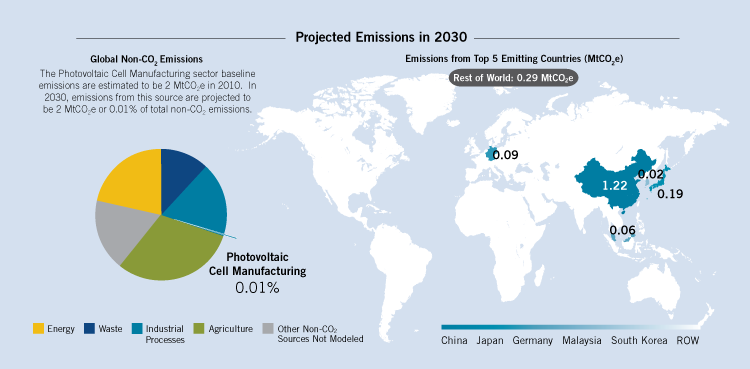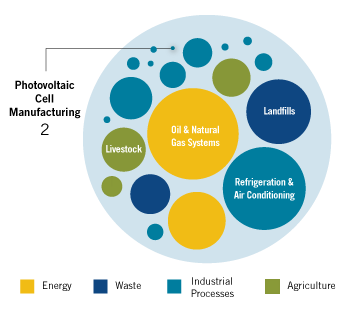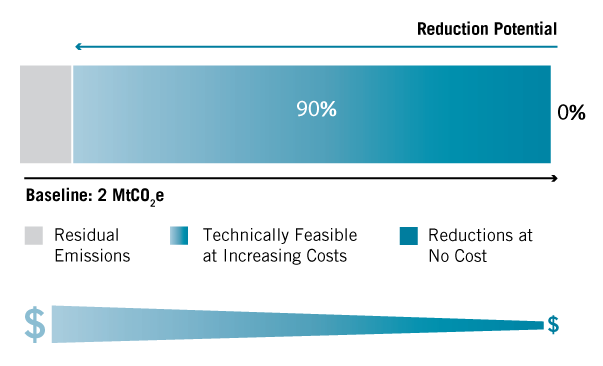Global Mitigation of Non-CO2 Greenhouse Gases: Photovoltaic Cell Manufacturing
Key Points
- The global abatement potential in the photovoltaic (PV) manufacturing sector ranges from less than 0.1 million metric tons of carbon dioxide equivalent (MtCO2e) to 1.7 MtCO2e in 2030.
- Reduction technologies include technologies that reduce fluorinated greenhouse gas (F-GHG) emissions through etch and/or chamber cleaning processes.
- The high costs of emissions reduction technologies combined with low emissions reductions lead to abatement costs greater than $200/tCO2e.
Sector Description
The PV cell manufacturing process often uses multiple F-GHGs during production, some of which are released into the atmosphere. Baseline emissions were estimated at 2.3 MtCO2e in 2010. A reduction in baseline emissions is anticipated in both 2020 and 2030, declining to an estimated 2.1 MtCO2e and 1.9 MtCO2e, respectively.
 View or download the full-size image here.(123 K, PNG)
View or download the full-size image here.(123 K, PNG)
Emissions Reduction Potential
Assuming full implementation of current technology, emissions in the PV cell manufacturing sector could be reduced by up to 2 MtCO2e in 2030. This accounts for 0.04% of the 4,615 MtCO2e in global reduction potential in 2030.
 View or download the full-size image here.(99 K, PNG)
View or download the full-size image here.(99 K, PNG)
Abatement Potential
The global abatement potential in the PV manufacturing sector is estimated to be 1.9 MtCO2e in 2020 and 1.7 MtCO2e in 2030, or 90% of baseline emissions in each year. High capital costs and low emissions reductions associated with the available abatement measures result in abatement costs greater than $200/tCO2e. No statistically significant emissions reductions are available at abatement costs below $200.
 It would be cost-effective to reduce emissions by 0%, compared to the baseline, in 2030. An additional 90% reduction is available using technologies with increasingly higher costs.
It would be cost-effective to reduce emissions by 0%, compared to the baseline, in 2030. An additional 90% reduction is available using technologies with increasingly higher costs.
View or download the full-size image here.(37 K, PNG)
Abatement Measures
Abatement measures considered for reducing F-GHG emissions from the PV manufacturing sector include thermal abatement systems, catalytic abatement systems, plasma abatement systems, and the nitrogen trifluoride (NF3) remote chamber clean process. These technologies have the potential to reduce emissions from etch and/or chamber clean processes by 90%.
 Emissions reductions by technology in 2030 at $0/tCO2e and at higher prices.
Emissions reductions by technology in 2030 at $0/tCO2e and at higher prices.
View or download the full-size image here.(40 K, PNG)
